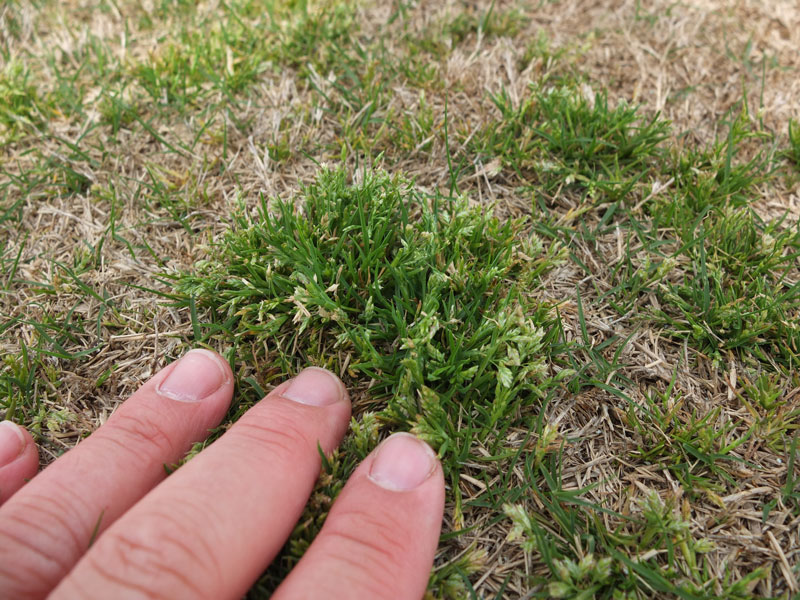Univ. of Tennessee Research Adds to Our Understanding of Poa annua Life Cycles
Devon Carroll, Ph.D., Herbicide Development Manager and Zac Reicher, Ph.D., Green Solutions Team Specialist
Research from my completed dissertation at the University of Tennessee suggests that Poa annua dies due to adverse environmental conditions, rather than it being an annual species, as long thought to be the case. This research further validates recommendations to use a PRE + POST combination for Poa control, such as Envu’s PRE3.
Research findings at Tennessee:
- As long as Poa annua was treated with an aggressive fungicide program, some plants were able to persist year-round in zoysia fairways in spite of summer heat
- Research suggests that warm-season turf in less stressed areas like shade, Poa annua may survive throughout the summer in the transition zone and farther south
- The surviving Poa annua was often not visible, surviving only as crowns or small one-leaf plants within the zoysia canopy
- The percentage of surviving plants would likely increase with less stressful summers and/or as one moves north in the transition zone
- Surviving Poa starts growing earlier and at a quicker pace than newly germinated plants from seed
Implications for Poa management:
- Most PRE herbicides including Specticle® are highly effective only when applied prior to emergence, and efficacy decreases as Poa germinates and matures to multiple leaf stage plants
- This helps explain what may have been previously perceived as PRE breakthroughs in swales, shaded areas, and in or immediately adjacent to areas regularly treated with fungicides
- Emphasizes the value of scouting prior to herbicide application in the fall, looking for surviving Poa. Realize surviving Poa plants may die back to a single tiller, so this requires close observation. History may be helpful if areas exist on your course where Poa traditionally matures quicker than in other areas
- Reinforces our recommendation of PRE3, a tank-mix of a PRE + POST combination for Poa annua for improved control and resistance management over just a PRE herbicide
Envu's PRE3: a tank-mix of Specticle FLO + Tribute® Total + simazine
- Provides consistent PRE and POST control, plus three modes of action for resistance management
- PRE3 controls problematic winter annual broadleaves and annual sedges
- Wider window of application since annual bluegrass germination can vary from year to year
- More application flexibility including:
- Ability to wait until after heavy rainfalls from tropical storms that could leach and degrade herbicides
- Accommodates for warm temperatures that could encourage annual bluegrass germination throughout the winter
- Single or split applications of PRE3 can be made starting in late-October or November based on your location, weather, amount of annual bluegrass germination, etc.
- Rates, timings, and application intervals can also be based on weather and previous experience
- Other herbicide options for resistance management:
- RoundUp® could be rotated in the tank-mix for non-selective control on dormant fairways for another herbicide site of action
- Glufosinate could also be rotated in the tank-mix for still another non-selective site of action
More information – always refer to the label for specific recommendations and contact your Envu Area Sales Manager if you need assistance

Recent research suggests Poa annua can survive under the canopy of a warm-season turf in limited stress areas, and then develops much quicker than other Poa germinating from seed on the same course, often escaping PRE herbicide applications (Envu).
